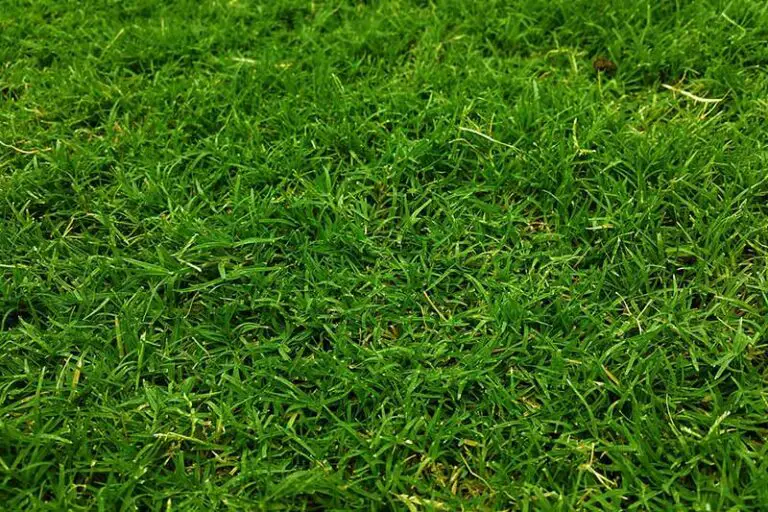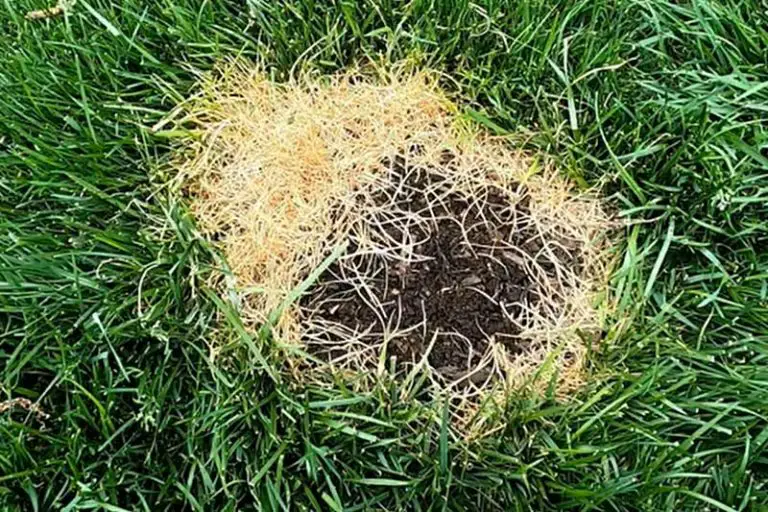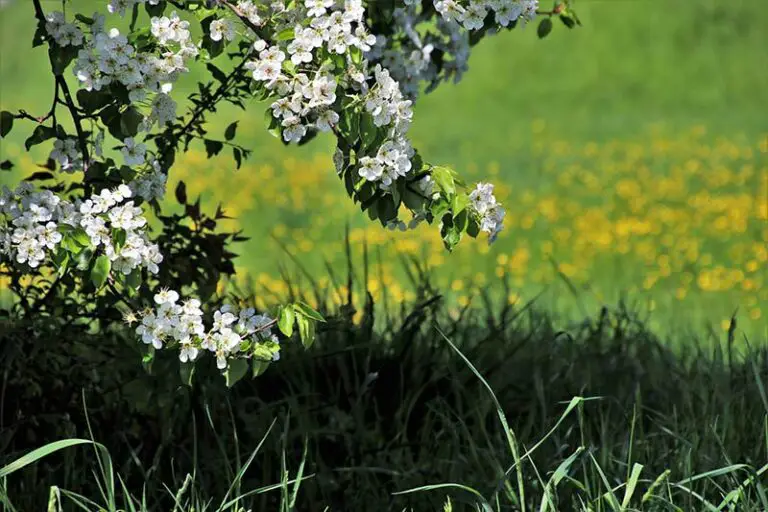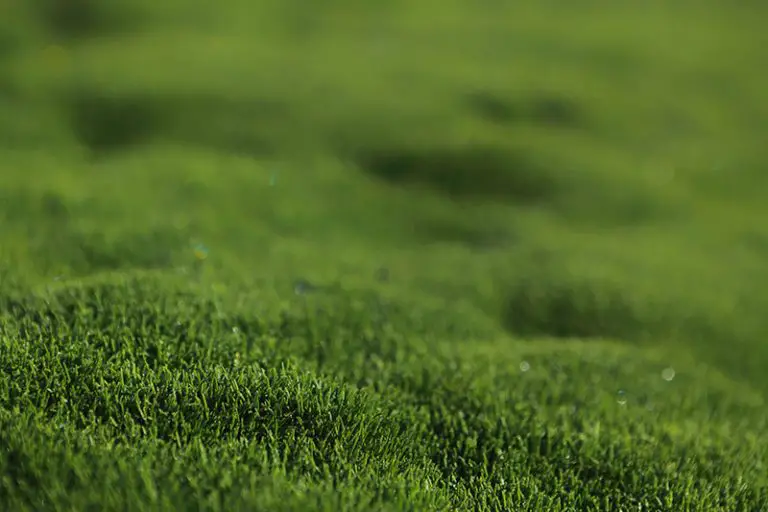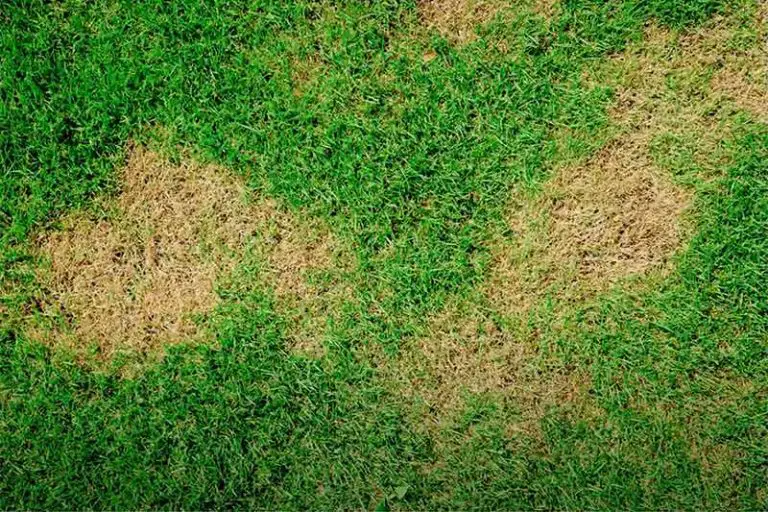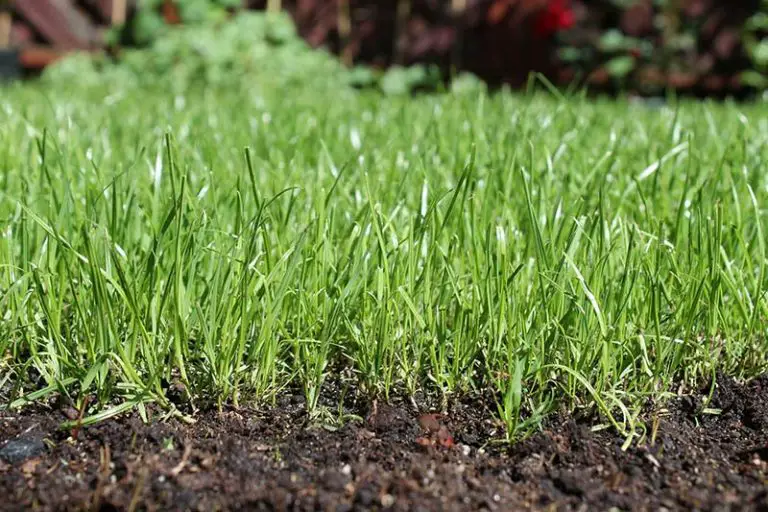Reviving Your Lawn: Dormant vs. Dead Grass
Depending on the type of grass you’re growing and the climate that you live in, your grass will likely enter a period of dormancy at some point throughout the year. In its dormant state, grass can appear as though it’s dead.
The difference between dormant grass and dead grass is that, in its dormant state, the grass is still alive and able to be revived, while it isn’t possible to revive grass that is completely dead. In both states, the upward growth of the grass will turn brown and die off. However, dormant grass still has a living root system and will recover when conditions are favorable for its growth. Unfortunately, dead grass will not recover regardless of any watering and fertilization efforts.
What is Grass Dormancy?
Your lawn will enter a period of dormancy when external conditions are unsuitable for grass growth. In its dormant state, the grass will stop growing entirely. Although the upward growth of the grass turns brown and appears dead, this is simply a survival mechanism; the grass will green back up when conditions allow it to re-enter its phase of active growth.
Grass plants are able to survive throughout unsuitable growing conditions using this mechanism. The blades of the grass are technically dead, however, the roots and crown of the plant are still very much alive. By entering a state of dormancy, the grass plants are able to conserve energy and nutrients that would otherwise go towards their upward growth. Instead, the grass plants utilize the energy and nutrients to keep their roots alive.
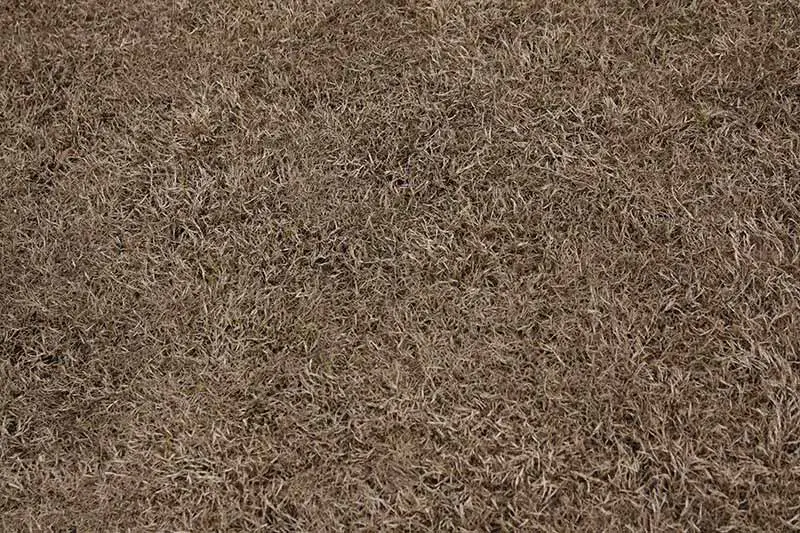
When Does Grass Go Dormant?
Due to their differing growth habits, cool-season grasses and warm-season grasses turn dormant under different conditions.
Cool-season grasses go dormant over the winter when soil temperatures fall consistently below 45°F. They may also turn dormant over the summer if temperatures are high and they don’t receive enough water in the absence of rainfall and irrigation. These grasses green back up in spring and fall when they reenter their periods of most active growth.
Warm-season grasses go dormant in the fall when temperatures are consistently lower than 65°F. They will remain dormant over winter until their period of most active growth begins again the following spring.
How Long Does it Take Dormant Grass to Turn Green?
Generally speaking, it takes about 2 to 4 weeks for dormant grass to turn green again. The grass’ roots are the first part of the plant to break dormancy. Once the roots launch back into action, it will take several weeks for the upward growth to fully recover.
There are a couple of conditions that may delay dormancy emergence, even when temperatures are in the ideal range for your grass type. For instance, a thick thatch layer can slow this process down; the thatch can prevent soils from warming up as quickly, or, it may block water from reaching the grass’ roots. Also, attempting to fertilize with water-soluble fertilizers to delay dormancy can weaken the grass. This ultimately hinders the grass’ ability to green back up when it re-enters its natural phase of active growth.
What Causes Dead Grass?
There are a few circumstances from which grass will not be able to recover. Dead grass can be caused by extensive periods of drought, thatch, overfertilization, improper mowing and watering, pest and fungal infestations, and animal urine.
Extensive Periods of Drought
One of the most common reasons for dead grass is drought. While there are many drought-resistant grass types, even the hardiest grass will die eventually after an extended period without water.
Grass is able to survive periods of drought in a state of dormancy for up to 6 weeks; how long your grass will last without water depends on the grass species you have and its level of drought tolerance. Your grass will also be more susceptible to drought if you have overly compact or clay-heavy soil.
Thick Thatch Layer
Thatch is the layer of dead organic plant matter that sits between the soil surface and the upward growth of your grass. A layer of thatch under ½ inch thick won’t affect your grass’ health. However, when the thatch layer accumulates beyond ½ inch, it can stifle the growth of the grass and will block water and nutrients from reaching the grass’ roots.
When your thatch layer is over ½ thick, you’ll need to dethatch the lawn. You can do this using a rake, mower attachment, or an electric dethatcher, depending on the size of your lawn and the extent of the thatch buildup. This is essential to prevent the thatch layer from choking out your healthy growth and causing your grass to die.
Overfertilization
Although fertilization is a crucial lawn care practice to maintain the health of your grass, it’s possible to overfertilize. In addition to nutrients, fertilizers contain salts; when you add too much fertilizer to your lawn, the salts build up to a toxic level in the turf. As a result, the toxicity can cause patches of dead grass on your otherwise healthy lawn.
You fertilize no more than 2 to 4 times throughout the growing season. Take care when fertilizing with high-nitrogen fertilizers, as these are more likely to cause fertilizer burn.
Improper Mowing
Mowing is another essential practice to promote the healthy growth of your grass. However, improper mowing can cause damage to your turf. For instance, mowing the grass too short for its species can damage the turf; the grass is unable to recover properly and is vulnerable to scorching in the sun.
Another way you can damage your grass is by mowing with dull mower blades. When mower blades are dull, they have a tearing action on the grass instead of creating a clean cut. This weakens the grass and leaves it more susceptible to the development of fungal lawn disease.
To avoid killing your grass through improper mowing, make sure to always cut your grass to the best height for its species. You should also follow the ⅓ rule when mowing, i.e., never remove more than ⅓ of the grass’ total height per mow. On top of this, remember to sharpen your mower blades twice per season.
Pest Infestations
If you’ve been keeping up with your lawn care activities but you still notice patches of dead grass, you may have a pest infestation. Many lawn pests can kill grass by feeding on the blades and roots. As a result, your lawn will have patches of dead grass that no amount of watering or fertilization will fix.
One of the most destructive types of lawn pests are grubs. Other common lawn pests that can kill grass include chinch bugs, billbugs, mole crickets, nematodes, mites, leafhoppers, and other various types of insect larvae. Upon determining which pest you’re dealing with, you’ll have to treat the lawn with an appropriate pesticide.
Salt Damage
Dead grass on the areas of your lawn nearby to streets, sidewalks, or driveways may indicate salt damage. This is likely the case if these areas close to your lawn have recently been treated with salt to melt ice. The salt draws water away from the grass, causing it to turn brown and die off. You can counteract this issue by thoroughly rinsing the affected areas with water to dilute the salt.
Pet or Animal Damage
Pets or animals that frequent your lawn may be the culprit behind patches of dead grass. Pet and animal urine contains nitrates; although this substance is a beneficial nutrient for grass, too much nitrogen will kill the grass plants off.
You may notice the dead patches are edged with a ring of bright green grass where the diluted nitrogen acted as a fertilizer. This is a likely indication that the dead grass is from animal urine.
Dormant Grass vs Dead Grass
The difference between dormant grass and dead grass is that the former is still alive, while the latter is not. Under the right care and conditions, it’s possible to revive dormant grass. However, once the grass dies completely, revival will not be possible. The only option is to remove the dead grass and reseed the lawn from scratch.
How to Tell if Grass is Dead or Dormant
It can be difficult to tell the difference between dormant grass and dead grass, as your lawn will appear practically identical in either state. There are a few ways you can assess the state of your lawn to determine whether the grass is dead or just going through a period of dormancy.
1. Observe How the Lawn is Turning Brown
You can visually assess whether your grass is dormant or dead by observing the way in which it turns brown.
In a period of dormancy, grass typically turns brown in a uniform manner. The only circumstance that would cause partial dormancy in the lawn is if certain sections don’t receive as much water or sunlight as others. Apart from this, dormancy usually doesn’t manifest in patchy or inconsistent areas of brown grass.
If your lawn contains brown grass in patches or spots, it’s much more likely that the grass is dead. This is particularly true if the entire lawn is receiving equal amounts of water, nutrients, and sunlight. In this circumstance, you’ll need to investigate the alternative potential reasons why your turf is dying.
Despite this guidance, uniform browning of the lawn does not definitively indicate that the grass is dormant. To properly determine whether your grass is dormant or dead, you can conduct a tug test – as we explain in the following step.
2. Conduct a ‘Tug Test’
A tug test is an extremely straightforward way to differentiate dormant grass vs dead grass. To carry out this test, all you need to do is pull a handful of grass from your lawn. If you’re able to remove the grass from the ground with ease, it’s dead; if you feel some resistance when pulling up the grass, it’s more likely to be dormant.
3. Water the Lawn
A final method you can use to determine whether your grass is dead or dormant is to water the lawn. When grass turns dormant over summer, particularly cool-season grass, it’s often a sign that the lawn isn’t receiving enough water or nutrients.
You can find out if this is the case by increasing the amount of water you add to your lawn for a few days. On top of the usual 1 to 2 inches per week, add a little extra water to your lawn and observe how it reacts. If the brown grass starts to green back up, this is a sure sign that your lawn is in a regular state of dormancy. If it remains brown and lifeless, it’s almost a certainty that the grass is dead.

